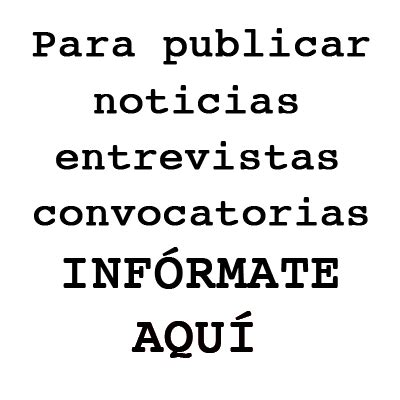In the pursuit of strength and fitness, the gym floor often becomes a battleground where ambition can sometimes overshadow technique. While pushing your limits is essential for progress, ignoring proper lifting form is a direct invitation for injuries, particularly to the shoulders and knees – two of the body’s most complex and vulnerable joints. Understanding and implementing key form cues isn’t just about lifting more weight; it’s about lifting smarter, ensuring longevity in your fitness journey.
Why Form Matters More Than Weight
Many lifters fall into the trap of ‘ego lifting,’ prioritizing heavy loads over controlled, precise movements. This approach not only diminishes the effectiveness of an exercise by shifting tension away from the target muscles but also places undue stress on joints, ligaments, and tendons. Over time, this cumulative stress can lead to chronic pain, acute injuries, and significant setbacks in your training. By focusing on form, you build a stronger foundation, enhance muscle activation, and drastically reduce your risk of injury.
Protecting Your Shoulders: Precision in Upper Body Lifts
The shoulder is a highly mobile ball-and-socket joint, making it susceptible to a range of issues if not properly stabilized. Common upper body exercises like bench presses, overhead presses, and rows demand meticulous attention to shoulder positioning.
Bench Press & Overhead Press Cues
- Scapular Retraction & Depression: Before initiating a bench press, pull your shoulder blades back and down, as if trying to tuck them into your back pockets. This creates a stable shelf for your shoulders, protecting the joint.
- Elbow Tuck: For bench presses, keep your elbows at roughly a 45-degree angle to your body, not flared out directly to the sides. This reduces strain on the shoulder joint and promotes better chest activation.
- Core Braced & Neutral Wrist: Maintain a strong, braced core to prevent arching your lower back excessively. Keep your wrists straight and stacked over your forearms in both movements to avoid wrist strain and ensure force transfer.

Rows & Pull-downs Cues
- Initiate with the Back: When performing rows or pull-downs, think about pulling with your elbows and engaging your back muscles (lats, rhomboids) first, rather than just pulling with your biceps.
- Avoid Shrugging: Keep your shoulders down and away from your ears throughout the movement. Shrugging shifts tension to the upper traps and can strain the neck and shoulders.
- Full Range of Motion: Ensure a controlled stretch at the bottom and a powerful squeeze at the top, without using momentum to complete the lift.
Safeguarding Your Knees: Mastering Lower Body Mechanics
The knee joint bears significant loads during most lower body exercises. Incorrect form in squats, lunges, and deadlifts can lead to problems ranging from patellar tendinitis to meniscus tears. Understanding how your knees should move relative to your hips and ankles is crucial.
Squat Cues
- Knees Tracking Over Toes: As you descend into a squat, ensure your knees track in line with your toes, neither caving inwards nor bowing excessively outwards.
- Hip Hinge First: Start the movement by pushing your hips back, as if sitting into a chair, before bending deeply at the knees. This engages the glutes and hamstrings, protecting the knees.
- Appropriate Depth: Aim for a depth where your hips are at least parallel to your knees, provided you can maintain a neutral spine. Going too deep with poor form can be detrimental.
- Foot Position: Experiment with foot width and toe angle to find a comfortable, stable stance that allows for proper knee tracking.

Lunge & Deadlift Cues
- Stable Base & Controlled Descent (Lunges): In lunges, ensure your front knee stays behind or directly over your ankle. The back knee should lower towards the floor. Maintain a strong, upright torso and control the descent.
- Hips Back & Neutral Spine (Deadlifts): For deadlifts, initiate the lift by pushing your hips back and maintaining a neutral spine throughout the entire movement. Your chest should be proud, and your gaze neutral.
- Bar Close to Body (Deadlifts): Keep the barbell as close to your shins as possible during both the lift and descent. This minimizes leverage on your lower back and knees.

General Principles for Injury Prevention
Beyond specific exercise cues, several overarching principles contribute to long-term joint health.
- Warm-up & Cool-down: Always dedicate time to a dynamic warm-up before lifting and a static stretch cool-down afterward. This prepares your joints and muscles for activity and aids recovery.
- Listen to Your Body: Pain is a warning sign. Differentiate between muscle fatigue and joint pain. If something hurts, stop, assess, and adjust.
- Core Engagement: A strong core acts as a stabilizer for your entire body, protecting both your spine and extremities during compound movements.
- Controlled Movements: Avoid using momentum. Each rep should be performed with control, focusing on the muscle contraction rather than just moving the weight.

Implementing these form cues requires patience and consistent practice. It’s often beneficial to start with lighter weights to ingrain proper movement patterns before gradually increasing the load. Don’t hesitate to record yourself or seek guidance from a qualified coach to get personalized feedback on your form.

Conclusion: Lift Smart, Live Strong
Preventing gym injuries, especially to critical joints like the shoulders and knees, is an ongoing commitment to smart training. By diligently focusing on proper lifting form, understanding the specific cues for each exercise, and adhering to general safety principles, you not only protect yourself from setbacks but also unlock greater strength, improved muscle development, and a more enjoyable, sustainable fitness journey. Prioritize precision over poundage, and your body will thank you for years to come.



